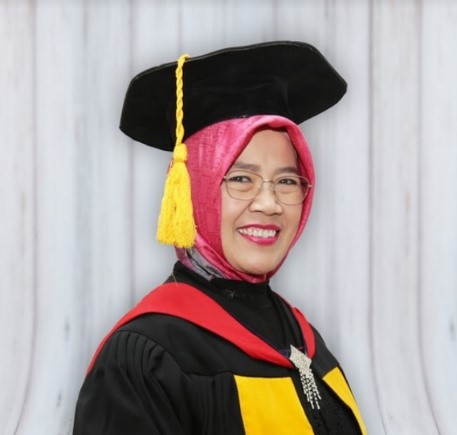Our Researcher

Prof. Dr. Ida Hamidah, M.Si
Professor Physics Education Faculty of Technology and Vocational EducationAdvanced Materials for Renewable and New Energy
Still fresh in our memories, how outstanding was China that managed to create a hospital to accommodate its citizens that has been affected by Covid-19 in just ten days. Ten days is a very quick count to build a hospital on 5.6 hectares of land with a bed capacity of 1000 units. Of course, we really appreciate the Chinese government system that is able to manage an activity very well, which is able to make 7000 workers work day and night without stopping. But behind that, have you ever thought about what materials/materials they use so that the hospital can stand firm with all its modern equipment? The answer is advanced materials.
Advanced materials are produced by modifying the structure of natural materials so that their characteristics are much better. Some examples of advanced materials are amorphous silicon, amorphous iron, composites, catalysts, and polymers. Smartphone cases, super light bikes, and high-speed fuselages are some of the latest products that use advanced materials. Scientifically, advanced materials are one of the fields of material physics work in addition to electronic materials, optical materials, magnetic materials, quantum phenomena in materials, physics nonequilibrium, and physics of condensed materials.
With the successful modification of the structure of natural materials, nowadays many advanced materials have been applied in various fields of technology, one of which is technology to harvest energy from something that is moving. This technology is called an energy harvester. The energy that comes from moving things, such as river water, wind, machinery systems, and the earth's motion, is the kinetic energy available in our environment that has not been used optimally. Several attempts have been made to capture mobile energy using advanced materials, including piezoelectric materials and carbon nanotubes. However, low efficiency, low-frequency band, and low device reliability are still the main drawbacks of this concept. Among the causes that reduce the performance of the energy harvester system are the low flexibility of the membrane design and the use of inappropriate materials. Inflexible membranes can reduce the performance of the device to induce an electric current. Energy harvesting by combining electromagnetic waves is the best alternative way of providing electrical power for a very wide range of applications. For this reason, research on nanomagnetic polymer-based membranes is now a research trend that is quite intensively carried out.
If the performance of the harvester energy system has been optimal, then this is in line with Indonesia's National Energy policy in the form of increasing the share of new and renewable energy (EBT) from 5% (2014) to 23% (2025). The government calculates that increasing the share of EBT in the energy mix to 23 percent can save budget up to tens of trillions each year. The EBT portion is targeted to be realized in 2025. The potential to be achieved by EBT in the national energy mix in 2025 is 45.1 gigawatts (GW). With details, 7.2 GW of geothermal, 18 GW of hydropower, 3 GW of mini and micro-hydro, 5.5 GW of bio-energy, 6.5 GW of solar power, 6.5 GW of wind power.
In order to support Indonesia's National Energy policy, several domestic universities have welcomed it with various programs, for example, the University of Indonesia through the University Development Agency and Logistics Management and the Directorate of Facility Management and Maintenance to develop new and renewable energy program initiatives. Likewise, with the Physics Doctoral Program of Universitas Brawijaya which forms the field of interest in Renewable Energy and the Environment. It is hoped that awareness of the importance of EBT to maintain a balance in the availability and use of energy on earth is expected to be able to touch all groups, both the public and the government, both stakeholders and institutional leaders. If only all parties work continuously, then it is not impossible that the target of increasing EBT in 2025 will be realized.
Likewise, countries in various parts of the world have realized the importance of developing new and renewable energies by providing understanding and skills about EBT through curricula. Examples include the Hydrogen Education Curriculum at Michigan Technological University, the Hydrogen Technology and Energy Curriculum at the University of California, and the Innovation Research Center for Fuel Cells at The University of Electro-Communication-Japan. We all understand very well that all technological advances will not be on target without the role of education.
In line with the spirit of the Minister of Education and Culture regarding independent learning, one of which is outlined in the form of Permendikbud No. 3 of 2020 Article 11 paragraph (1), that the characteristics of the learning process consist of interactive, holistic, integrative, scientific, contextual, thematic, effective, collaborative, and student-centered characteristics. For that, Hopefully, all forms of activities to produce technology need to be integrated through research activities in learning. In this way, it is hoped that students will be able to generate creative ideas to provide solutions to all problems faced, including problems in the supply of new and renewable energy.